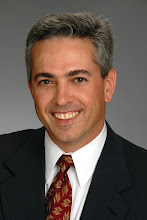In short, the "lag method" involves taking a deduction for the CFT in the year following that in which the taxable income arose from which it was determined (e.g., CFT computed at $100x earned in 20x1, times 8.84% is $8.84x and is deductible in 20x2 for federal income tax purposes). While this rule has applied for many years, the reason for it doesn't seem to be widely known.
In a nutshell, the CFT deduction is subject to the “lag method” for federal tax purposes due to Internal Revenue Code section 461(d). But wait, you say...section 461(d) doesn't say anything about CFT! All it says is the following:
461(d) Limitation on acceleration of accrual of taxes.
(1) General rule. - In the case of a taxpayer whose taxable income is computed under an accrual method of accounting, to the extent that the time for accruing taxes is earlier than it would be but for any action of any taxing jurisdiction taken after December 31, 1960, then, under regulations prescribed by the Secretary, such taxes shall be treated as accruing at the time they would have accrued but for such action by such taxing jurisdiction.
(2) Limitation. - Under regulations prescribed by the Secretary, paragraph (1) shall be inapplicable to any item of tax to the extent that its application would (but for this paragraph) prevent all persons (including successors in interest) from ever taking such item into account.
So what does the above text have to do with delaying the deduction for CFT? Well, it goes back to the general rules for timing (section 461) as well as a bit of history.
At the risk of boring some readers, a bit of background is warranted here. Any accrual-basis taxpayer wishing to take an expenditure into account (whether deducting or capitalizing it) must first meet the all events test. Moreover, such item cannot be taken into account until there is economic performance.
Section 461(h)(4) provides that "the all events test is met with respect to any item if all events have occurred which determine the fact of liability and the amount of such liability can be determined with reasonable accuracy." In other words, the liability in question (e.g., for the tax owed to California) must (1) be unconditionally due to the person to whom it's owed, and (2) must be able to be reasonably determined as of the day it's to be taken into account (i.e., generally the last day of the tax year).
Section 461(h)(2) and Treas. Reg. section 1.461-4 provide the rules for determining when economic performance occurs. In the case of taxes, economic performance occurs when those taxes are paid, in keeping with Treas. Reg. section 1.461-4(g)(6).
Based on the section 461 rules above, why wouldn't the CFT be properly accrued as of the last day of the year? After all, at year-end isn't (1) the tax reasonably ascertainable, (2) the amount unconditionally due, and (3) assuming estimates were paid throughout the year economic performance was met (or the taxpayer had adopted the recurring item exception of section 461(h)(3) and Treas. Reg. section 1.461-5)?
The answer, is currently yes, but used to be no. And that's where the history comes in.
You see, in the early 1970s, California modified its franchise tax regime which imposed a tax on most corporations doing business in the state. Before this change, a corporation's franchise tax would be measured on the corporation's current-year income, but would apply to the exercise of its corporate franchise (i.e., the right to do business in California) starting with the first day of the corporation's following year. As a result:
- All events test met (unconditionally due): No, because the tax was not owed until the company started exercising its corporate franchise on the first day of the next year.
- All events test met (reasonably ascertainable): Yes, since taxable income and the tax rate were "knowable" at year-end.
- Economic performance met: Presumably Yes, as noted above.
In doing so, California took action (after 12/31/1960) that effectively accelerated the accrual date of the CFT. This invoked section 461(d)(1), thereby negating that acceleration for federal income tax purposes.
So there you have it.
Final notes:
For more discussion of this rule, the following are enlightening.
So there you have it.
Final notes:
- Too often, taxpayers (and their tax professionals) don't fully understand the rules for claiming deductions in the correct year. That means write-offs are sometimes being taken too early and sometimes too late.
- The CFT tax deduction is just one example of how the "income tax accounting" rules can be surprisingly complicated and counterintuitive.
- I spent considerable time in KMPG's Washington National Tax practice and have personally seen how timing issues can have a multi-million dollar tax impact on someone's tax bill. Moreover, timing issues exist in virtually every industry and area of tax, so knowing the rules and how to apply them will (literally) affect most individuals and businesses. Let me know how I can help you (or your advisor) navigate this often-misunderstood area and avoid costly mistakes!
For more discussion of this rule, the following are enlightening.
- Rev. Rul. 2003-90 (http://www.irs.gov/pub/irs-drop/rr-03-90.pdf)
- Wells Fargo & Co. v. U.S., No. 09-CV-2764 (D. Minn. 8/10/12) (http://www.gpo.gov/fdsys/pkg/USCOURTS-mnd-0_09-cv-02764/pdf/USCOURTS-mnd-0_09-cv-02764-5.pdf)



